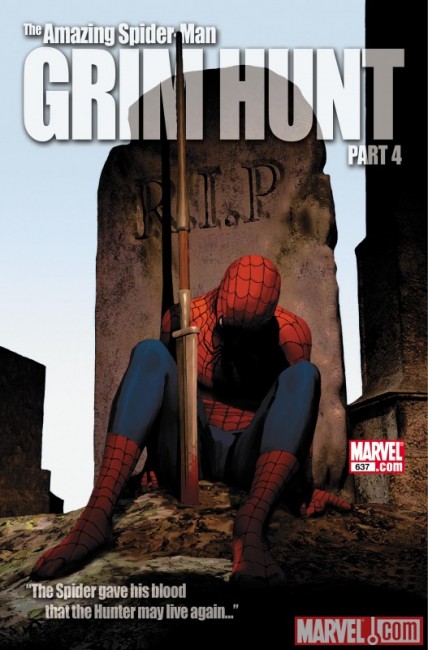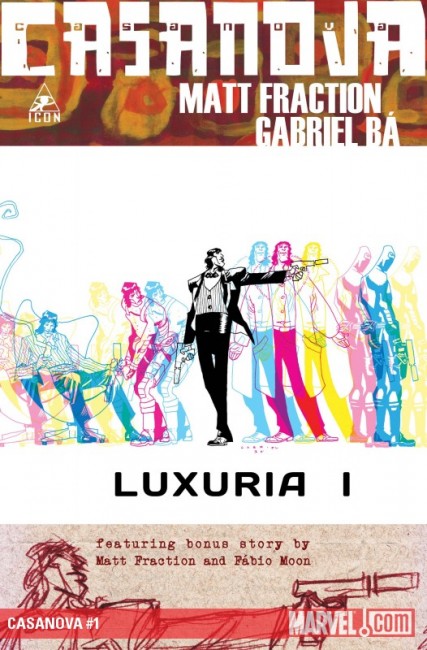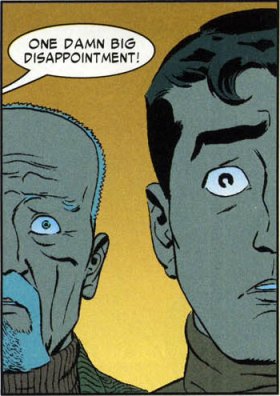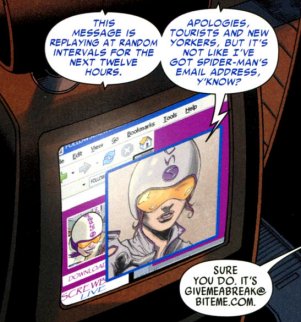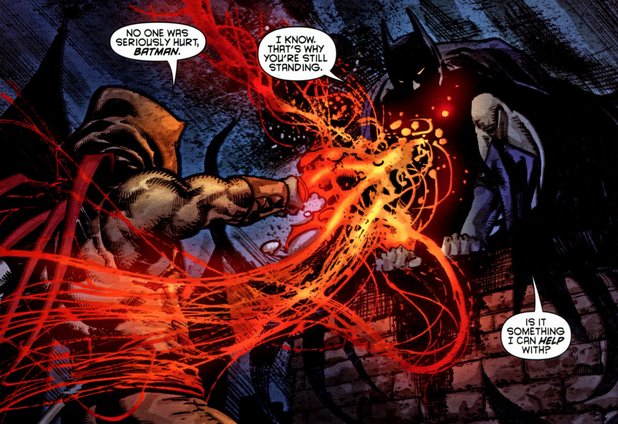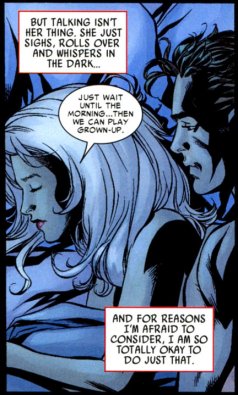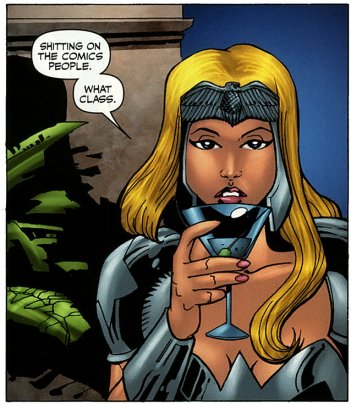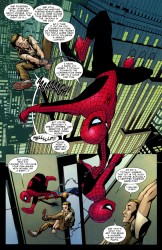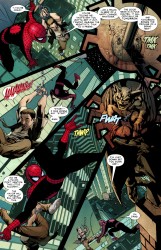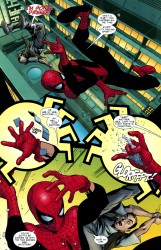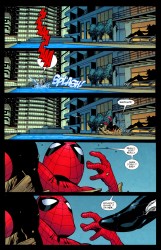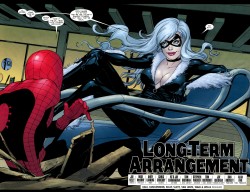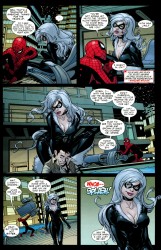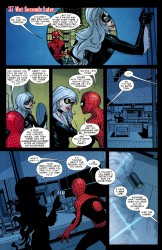
“Metaphors will keep me out the projects”
November 16th, 2010 Posted by david brothersSomebody asked me why I quit reading Amazing Spider-Man last week. I thought about doing a post detailing what I liked and didn’t like, but who cares? Why spend time on something that isn’t working for me? Instead, there is this, which, if you look at it sideways, maybe kinda relates.
My love of rap is directly related to my love of stories, but I’ll come back around to that.
I’ve been reading since I was a kid. I partially learned how to read by looking for my name in the credits of movies, which I would invariably watch all the way to the end. Comic books provided another useful resource, as the dialogue tended to be very simplistic and childish while the word choices were bombastic.
In other words, it wasn’t hard to understand the sentences, but you’d still have to look things up, particularly when you’re too young to figure out context. I remember Claremont/Lee-era X-Men being a treasure trove of new words. I know for a fact I learned “vernacular,” “deadpan,” and “kinetic” from those books. Poring over a stack of well-read comics, some freshly traded from friends, and having to ask someone how to say “Adirondacks” (where X-Force lived) is one of those things that sticks out in my memory.
Years later, I got a library card and was old enough to go there on my own. You could check out, what, five or eight books? Something like that. Enough to pack a backpack with. I’d burn through them and come back the next weekend for a reload. This would’ve been around 1995 or 1996.
In that same stretch of time, I started actually listening to rap. I knew the popular songs, and I knew that Method Man was kinda cool, and I really liked Tupac, OutKast, and Goodie MOb, but I didn’t really hear what they were saying. I couldn’t tell you anything about it, other than that it sounded cool. It was just something that came on the radio. And my mom controlled the radio, so that meant it was gonna be all R&B, all the time.
(Half a memory: Jay-Z’s “Ain’t No Nigga” dropped in 96, and it ran around my school like a brushfire. Tons of pretty little brown girls singing, “Ain’t no nigga like the one I got!” while the boys grunted, “No one can uh you bet-ter!” We couldn’t curse in school, you see.)
Jay-Z’s “Hard Knock Life (Ghetto Anthem)” hit in 1998 like an atom bomb. It decimated the airwaves, and my memory may be faulty, but I think the only song that I remember even touching it was OutKast’s “Rosa Parks.” “Hard Knock Life” was huge, and as a result, I heard the song at least a dozen times a week. That bassline is still absurd.
Eventually I started paying attention to the lyrics, and suddenly rap started looking a lot more attractive. There were stories here, people playing roles and creating their own myths. On top of that, there was wordplay, the sort of wordplay you simply didn’t see in R&B or movies. The meaning of words changed based on inflection, position in the bar, or even just because. Flow mattered, and one thing Jay has in spades is flow.
I had an after school job at this point, and one of the guys I worked with was this white dude who was super into underground hip-hop. He introduced me to a site called UGHH, which was full of indie acts and Real Media files at the time. That’s where I discovered Bad Meets Evil, bka Eminem & Royce da 5’9″, and a gang of other groups. At this point, the floodgates were opened wide and I was lost forever. Company Flow, Big L (who I discovered overseas when Rawkus released The Big Picture), Big Pun, Ras Kass, Kane, G Rap, Chino XL–whoever it was, as long as they could spit, I was there.
The kind of rap I’m still the most attracted to is built around the lyrics. Clever turns of phrase, complex wordplay, tongue twisters, double entendres, or even just kicking phrases with three or four meanings are what gets my motor going. Language is immensely powerful, and rap is all about bending language to your will. What you are talking about isn’t half as important as how you say it and the words you choose to express it. A simple chase scene (“The cops came, so I ran”) can become something that puts you right into the scene, and a sad love song (which would be rendered with earnest literalism in R&B, most likely) can turn into a sad first-person story.
Flow is crucial. Evidence once said that “emcees without a voice should write a book.” Any idiot can tell stories. Some idiots even make major cash and fame doing it, and good on them for being able to parlay mediocrity into a living wage. The people who matter–and I’m not just talking about rap here–the ones that stick out in your memory, are the ones that do something different or new. Pick your poison–Gabriel Garcia Marquez, Grant Morrison, Kurosawa, William Gibson, James Ellroy, Scorcese, Michael Mann, Quentin Tarantino. All of these guys either do something new or synthesize something old into something that’s almost entirely new. All of these guys have a voice.
Consider Big Pun dropping this bit of brilliance into an otherwise normal verse: “Dead in the middle of Little Italy, little did we know that we riddled some middleman who didn’t do diddily.”
Or Bun B murdering Jay-Z on “Big Pimpin'” to the point where Jay had to step his game up on the video version: Now, these motherfuckers know we carry mo’ heat than a little bit/ We don’t pull it out over little shit/ And if you catch a lick when I spit, then it won’t be a little hit/ Go read a book you illiterate son of a bitch and step up yo’ vocab/ Don’t be surprised if yo’ hoe step out with me/ and you see us comin down on yo’ slab/ Livin ghetto fab-ulous, so mad, you just can’t take it/ But nigga if you hate now/ then you wait while I get yo’ bitch butt-naked, just break it”
Or Eminem on “Kill You,” after he made his first mil: “It’s like a jungle sometimes, it makes me wonder/ Why I keep on duckin’ under the bed when I hear thunder/ ’cause I ain’t crazy, I say shit that’s crazy to crazy people/ To make ’em believe I’m crazy so they can relate to me/ And maybe believe in Shady, so they can be evil baby/ I like that!/ I’m only as crazy as people made me”
Or Fabolous mixing the Superman mythos with a stutter-step flow on Lil Mo’s “Superwoman”: “Be whipped? I might/ ’cause usually with my chips I’m tight/ But the only green I keep from you is kryptonite/ The way that blue and red suit fits your hips so right/ I be like duh-duh-duh-duh, duh-duh-duh-duh-duh DAMN”
Or any of the times when Ghostface has built an impressively visceral mood and setting using nothing but free association rhymes, new slang, and nonsense (“Hold up, we at the opera/ Queen Elizabeth rub on my leg/ Had ketchup on her dress from a Whopper/ Chunky ass necklace/ Must be her birthstone”), or when Luda has turned simple nursery rhyme-level lyrics into something that gets you heated just off charisma, or when Black Thought’s impressive technical skill knocks your socks off when you stop to think about his effortless rhymes. Young Jeezy isn’t lyrical, but he’s clever enough that I keep coming back for more. He’s like a supernova of charisma and black superhero music.
This sort of thing is why I listen to rap. It’s why I read books, it’s why I consume comics, and watch movies. It’s probably even why I made a conscious decision to become a writer. The stories and wordplay are what works for me, and if I can’t chew on something for a while, or if it’s just emulating something old, or if it’s just going through the motions, or if it’s just the same old, same old, it’s worthless.

